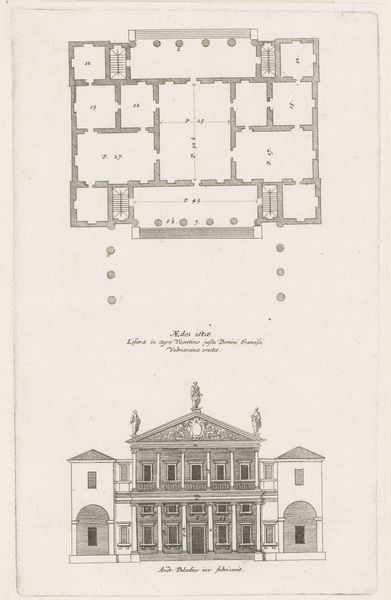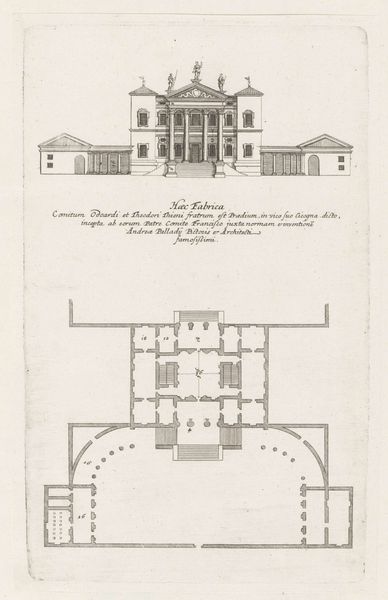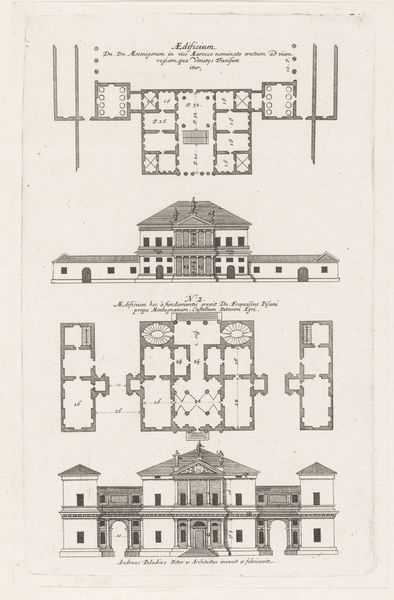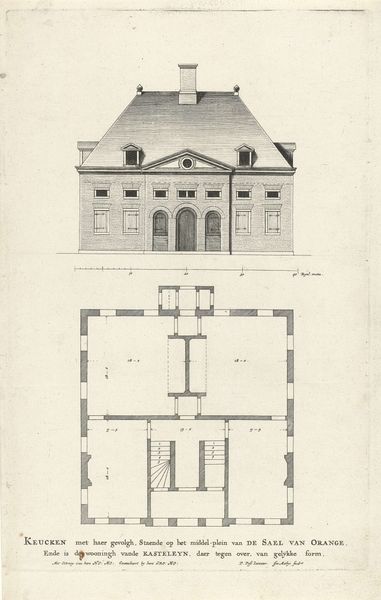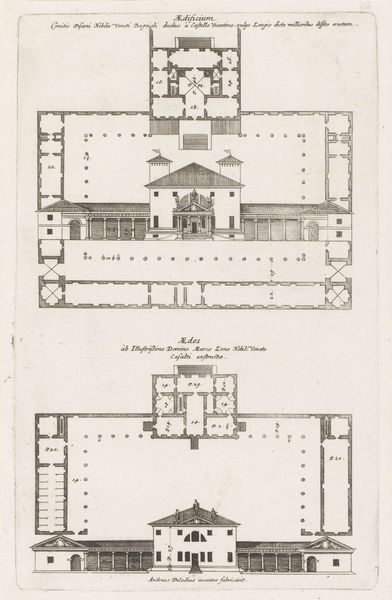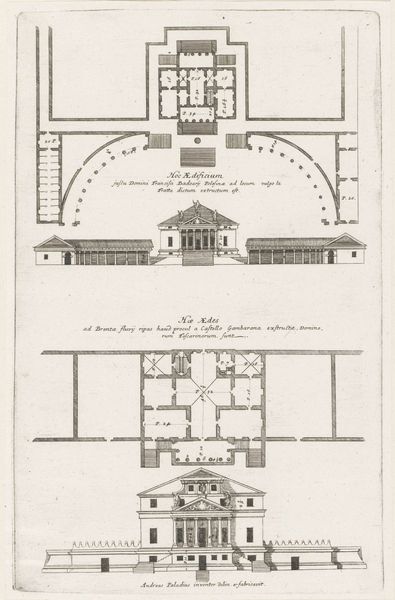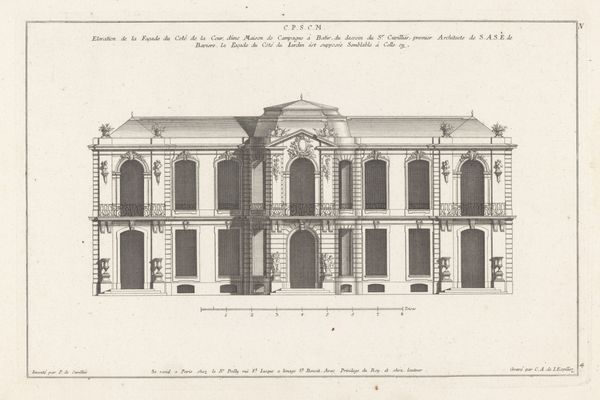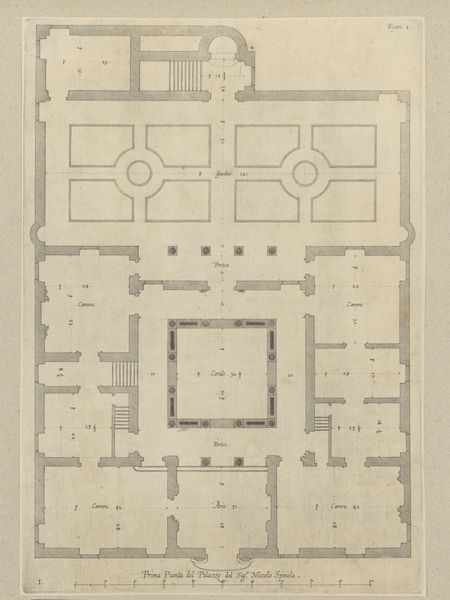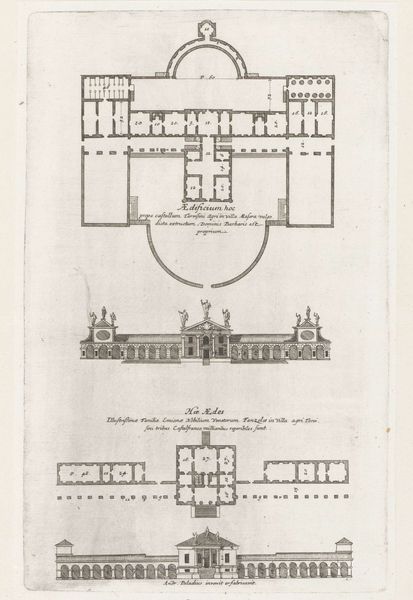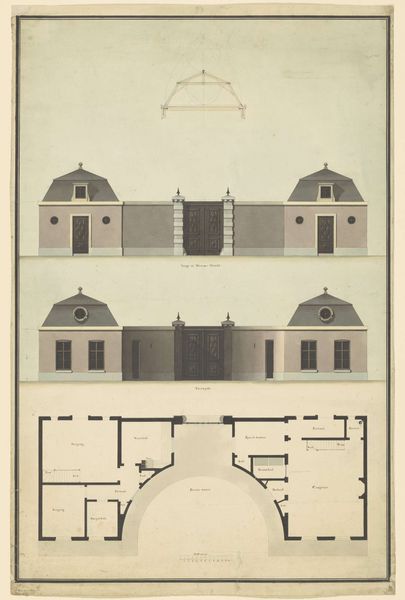
drawing, print, engraving, architecture
#
drawing
# print
#
perspective
#
11_renaissance
#
geometric
#
line
#
cityscape
#
italian-renaissance
#
engraving
#
architecture
Dimensions: height 319 mm, width 197 mm
Copyright: Rijks Museum: Open Domain
Curator: This engraving presents both the facade and floor plan of a villa designed by the renowned Andrea Palladio in the 17th century. The stark lines immediately remind me of the power of human ingenuity shaping our living spaces. Editor: The crisp geometry is striking. It feels incredibly controlled, almost cold. Not exactly a "lived-in" vibe at first glance. I am immediately thinking, is this an imagined ideal versus an inhabitable space? Curator: Precisely! These weren't just houses; they were statements. Palladio's villas were instruments of power for the Venetian elite, grounding their claim to territory as the economic base shifted from maritime ventures. He essentially adapted classical temple architecture for agrarian villas! The clean, balanced aesthetic was a very deliberate assertion of order. Editor: Order as propaganda! I love it. Knowing that makes the rigid symmetry much more palatable, because now I think of the architecture here less as 'sterile' and more as, well, loud and pompous! So what we see reproduced with printmaking—line engraving on paper—becomes a statement on power dynamics. Curator: Exactly, and this engraving in itself serves to democratize that "power," to some extent. Circulating the visual language of Palladio's villas allowed architectural ideas to spread, influencing generations of builders. Consider the echoes in landscapes, for example, where English landowners adopted a taste for Palladian villas to connect themselves to a heritage of Roman senators. Editor: Right, they wanted a piece of that controlled aesthetic. Even if the controlled part extended to their working populations. Well, that certainly shifted my perspective. Suddenly, all those straight lines have some meat on their bones! Curator: It’s amazing how a shift in perspective can transform one's reading of an artwork, isn't it? I suppose that's part of why these images hold so much continued appeal for me, because what begins as architectural representation opens up as historical lens. Editor: Absolutely! Plus it becomes a great reminder that everything we see reflects an era and someone’s values—be that elegance, austerity, or dominance, even if its not necessarily always cozy or comforting!
Comments
No comments
Be the first to comment and join the conversation on the ultimate creative platform.
